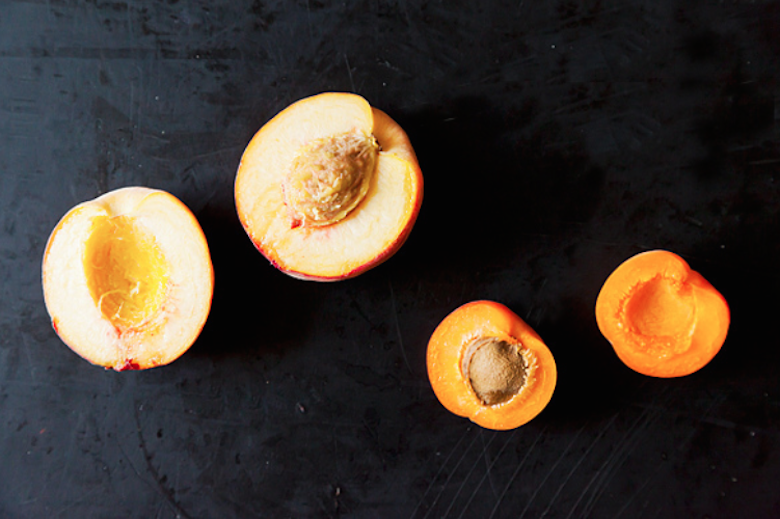There are so many great conversations on the Food52 Hotline it’s hard to choose a favorite. But we’ll be doing it, once a week, to spread the wealth of our community’s knowledge and to keep the conversation going.
Today: When it comes to stone fruit, it’s what’s on the inside that counts.
Around mid-summer, we begin to eagerly anticipate the return of apricots, peaches, plums and nectarines for making pies, crumbles, even breakfast tartines. After they’re carefully halved and pitted, we end up with two piles — one of sweet, succulent fruit and the other of hard pits to be tossed out.
But are we wasting a valuable part of the fruit? Community member Diane P turned to the Hotline with this very question, looking for unique was to use the pits of cherries, apricots and other late summer jewels.
- Noyaux, the kernels found in the pits of stone fruits, give off a pleasant bitter flavor similar to almond extract. Strawberrygirl follows the lead of Coppa’s Jamie Bissonnette and recommends using the kernels to flavor vinegars, syrups and liquors. To remove the kernel from the pit, cover the pit with a tea towel, and crush the hard shell with a hammer (or meat tenderizer) to access the kernel.
- Pastry chef Shuna Lydon has been using stone pits and kernels for 20 years, and makes sure to allay any lingering safety concerns: “The internal almond-looking kernel inside all stone fruit pits is not poisonous unless you plan on eating one ton of them.” She incorporates apricot kernels into her apricot jam — “They offer great texture, aroma and flavor to an already exquisite preparation” — and adds that stone fruit kernels can be used in a variety of household activities such as making soap. MsKristyGardner points out that they can even be added to potpourri.
- For a way to use cherry pits, our Associate Editor Marian Bull points to a recent Wildcard Winner: sour cherry almond frozen yogurt calls for using the whole cherry — pit included — to infuse the base for the frozen treat.
- Short on almond extract? Samin Nosrat soaks noyaux in vodka for a homemade almond extract. Add it to frangipane, cakes, whipped cream, and other baked goods for a deeper almond-like flavor.
- Even if you can’t find a culinary use that suits your needs, keep the pits out of the trash by composting or planting them, as Garee and ChefJune recommend.
Photos by James Ransom
How do you use your pits? Join in the conversation over on the Hotline, or share your thoughts in the comments below!
Instead of tossing them, Food52 inspires us to find culinary uses for this unexpected ingredient.






